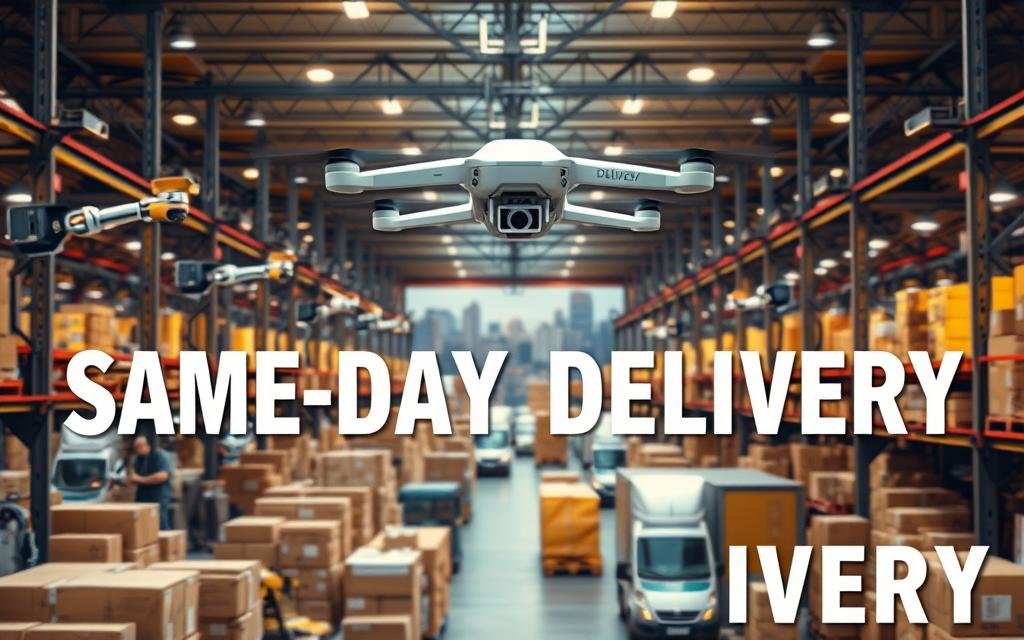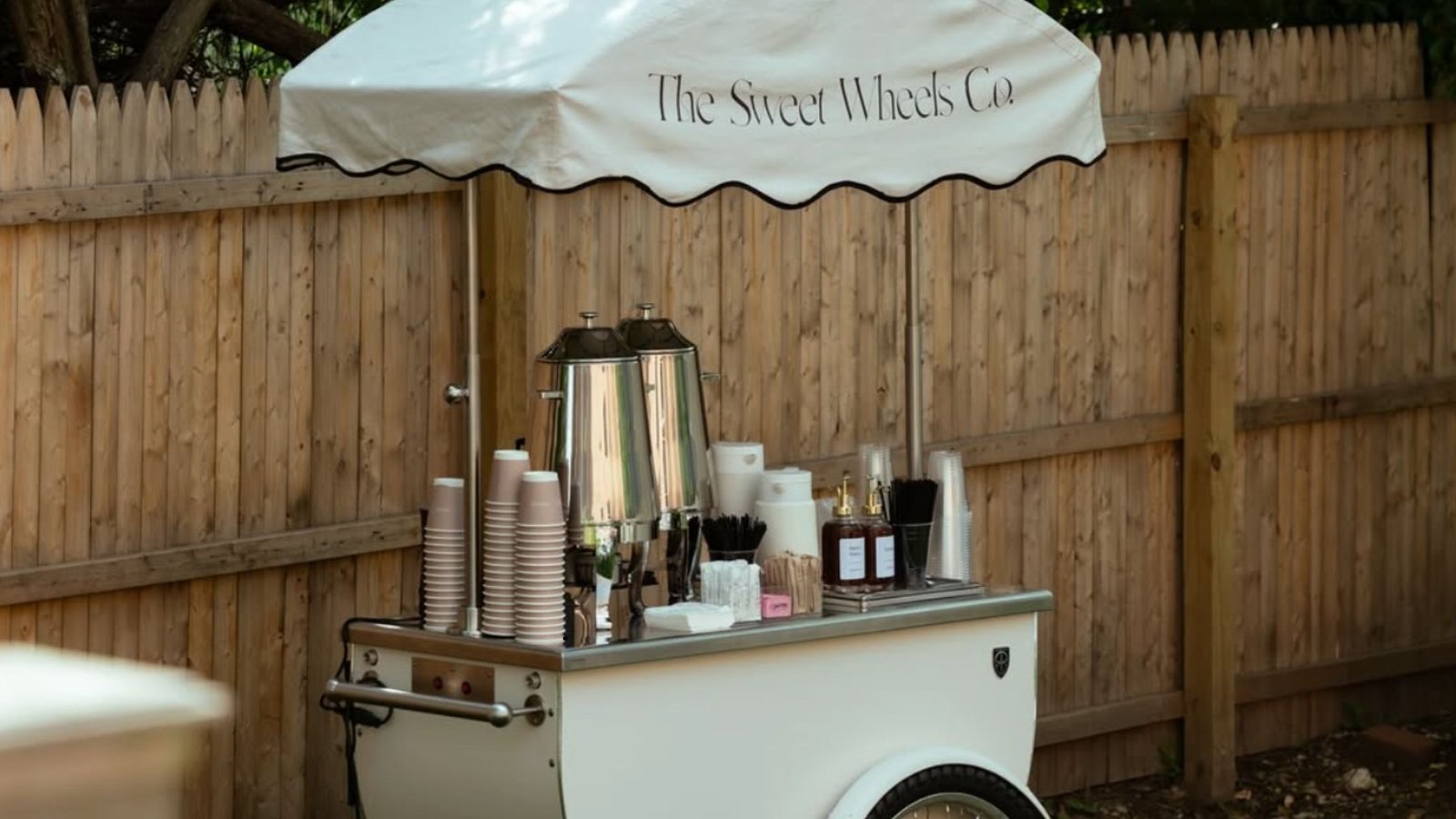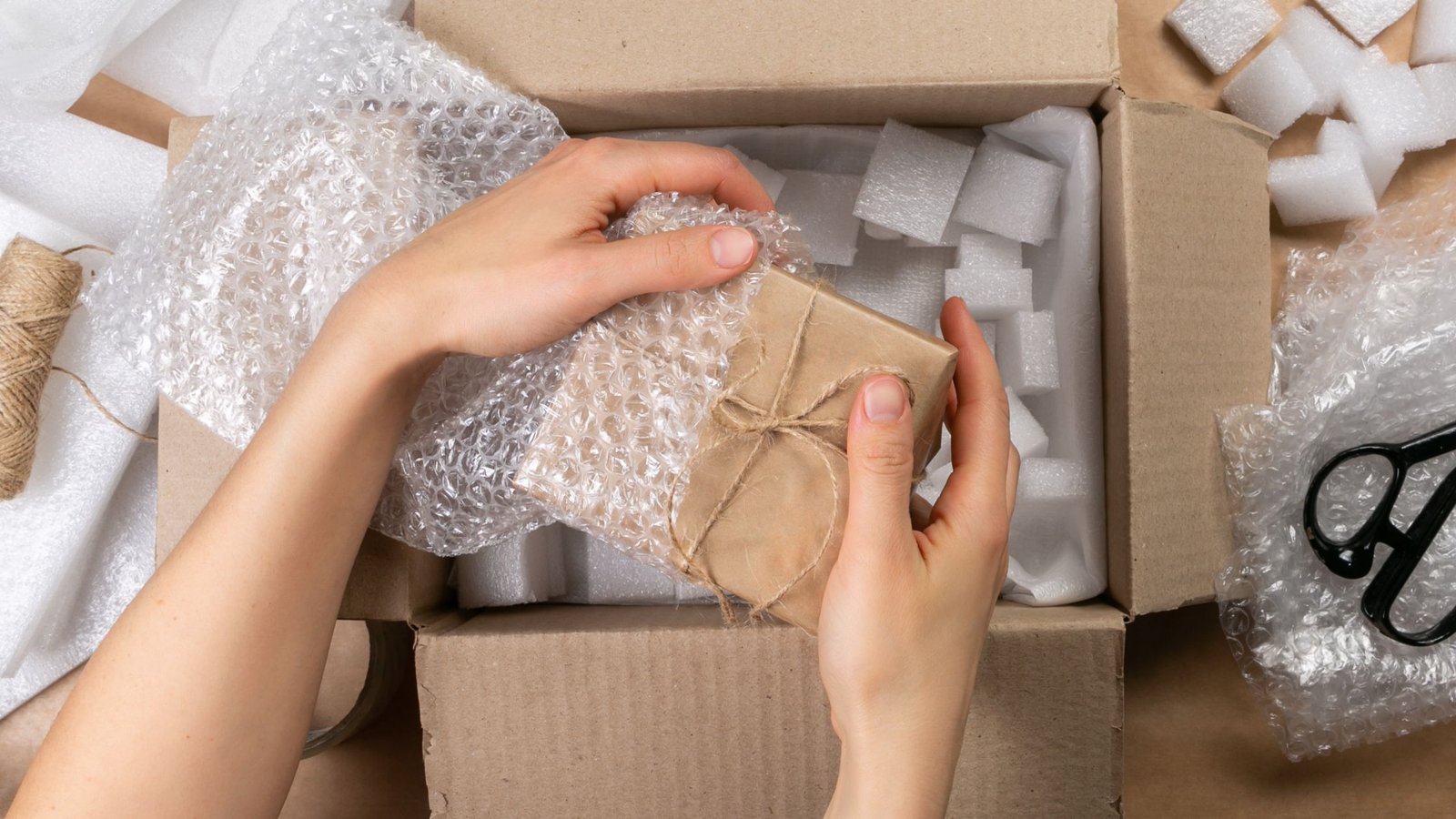Ever wondered how top online stores deliver to your door the same day you order? In the fast-paced world of e-commerce, same-day delivery is key. It meets the high expectations of today’s shoppers. Let’s dive into the world of last-mile delivery, its benefits, challenges, and strategies to boost your online business.
Key Takeaways
- Same-day delivery is key for staying ahead in e-commerce.
- Knowing the challenges of last-mile delivery can make logistics better.
- Customers want their orders fast more than ever.
- Using technology can make same-day delivery smoother.
- Going green can make your brand more respected.
Understanding Last-Mile Delivery in E-commerce
Last-mile delivery is key in e-commerce. It’s the final step to get products to the customer’s door. It’s vital for online stores to succeed because it affects customer happiness and loyalty.
Importance of Last-Mile Delivery
Last-mile delivery is very important. A smooth delivery process makes customers happy. In today’s competitive market, retailers must focus on this step to build trust and loyalty.
Key Challenges in Last-Mile Delivery
The final mile delivery faces many challenges. High costs and traffic in cities slow it down. Also, geography and technology add complexity. Retailers need to understand these to improve their logistics.
Future Trends in Last-Mile Logistics
The future of last-mile delivery looks exciting. Automation and self-driving vehicles will change how we deliver. Eco-friendly solutions are also becoming popular. These changes will make delivery faster, cheaper, and better for customers. For more on how companies like DHL are adapting, check this resource.
| Aspect | Importance | Challenges | Future Trends |
|---|---|---|---|
| Efficiency | Crucial for customer satisfaction | High operational costs | Automation in delivery |
| Technology | Enhances routing | Requires constant updates | Use of AI and drones |
| Sustainability | Meets consumer demand | Balancing eco-friendly practices | Green initiatives. |
Evaluating Delivery Options for Your E-commerce Store
Choosing the right delivery strategy for your online store is key. You need to look at both old and new ways to ship. This helps you meet what your customers want.
Comparing Traditional vs. Modern Methods
Old ways of shipping take longer, which can upset customers. New methods, like same-day delivery, focus on speed and ease. Stores that switch to these faster options can better serve their customers.
Cost Analysis of Various Delivery Solutions
Looking at the costs of different shipping methods is important. Stores must balance what they spend on shipping with their profits. Even though fast shipping costs more, happy customers might be worth it.
Customer Expectations and Preferences
Knowing what customers want is essential for good delivery plans. Many people now want their items quickly. By focusing on fast shipping, stores can make customers happy and keep them coming back.
Implementing Same-Day Delivery Solutions
When I think about same-day delivery, I know what’s key. I need top-notch technology to make things run smoothly. This tech helps with order processing and keeps customers updated in real-time. Using the right tools for last-mile delivery and same-day tech meets customer needs well.
Technology Requirements for Same-Day Delivery
Strong technology is the heart of a good same-day delivery system. Real-time tracking lets customers see where their packages are. Automated dispatching plans the best routes for delivery teams. These tools boost efficiency and make customers happier.
Establishing a Reliable Delivery Network
A solid delivery network is essential for same-day delivery. I look closely at logistics partnerships for their last-mile solutions. Checking their performance, reputation, and service helps build a strong delivery system.
Identifying Suitable Delivery Partners
Choosing the right delivery partners is critical. I look for those who know how to handle fast-paced delivery. A focus on quality and reliability in last-mile services helps meet customer needs and grow my business.
Utilizing Data for Delivery Optimization
In today’s fast-changing retail world, using data wisely can change how we deliver goods. Companies are looking for better ways to serve customers. They use data to improve how they manage stock and deliver items.
Inventory Management and Data Insights
Good last-mile delivery starts with knowing what’s in stock. By looking at data on stock levels, sales, and what’s available, I can make smart choices. This helps me know when to restock and avoid having too much.
This way, I save money and make sure customers get what they need when they need it.
Analyzing Customer Location Patterns
Knowing where customers live is key to better delivery routes. By studying where people live, I can plan better. This helps me use resources better and get items to customers faster.
It also makes customers happier because they get what they need sooner.
Leveraging Customer Feedback for Improvement
What customers say is very important for making things better. By listening to their thoughts, I can find areas to improve. This makes sure I’m focusing on what customers want.
By doing this, I can make deliveries better and keep customers coming back.
The Role of Warehousing in Last-Mile Delivery
Effective warehousing strategies are key for successful last-mile delivery in e-commerce. The right warehousing approach boosts efficiency and flexibility, meeting customer needs. By using strategic locations, automation, and local partnerships, I can deliver products efficiently and save costs.
Strategic Warehouse Locations
Choosing the right warehouse locations is vital for quick and affordable delivery. Warehouses near cities help with same-day deliveries. This reduces the distance for last-mile carriers, making customers happier.
Automated Warehousing Solutions
Automation in warehousing improves inventory and order handling. Technologies like robotics and automated picking systems make things faster and more accurate. This boosts e-commerce fulfillment services, allowing for quicker order fulfillment.
Partnerships with Local Fulfillment Centers
Working with local fulfillment centers helps meet fast delivery demands. These partnerships use regional strengths for better market access. This makes my warehousing strategy more flexible and responsive.
Enhancing Customer Experience During Delivery
In today’s market, making delivery a positive experience is key. Using real-time tracking, flexible delivery, and clear communication boosts satisfaction. As last-mile delivery grows, staying ahead in meeting customer needs is vital.
Real-Time Tracking and Updates
Real-time updates give customers peace of mind. Tracking software lets them see their package’s journey. This makes the delivery process more satisfying.
Flexible Delivery Options for Customers
Every customer is different, and understanding this makes their experience better. By providing various delivery choices, like same-day or specific time slots, you meet their needs. This leads to happier customers and brand loyalty.
Communication Strategies for Delivery Updates
Good communication keeps customers engaged. Timely updates and notifications through SMS, email, and apps are essential. This approach helps businesses stay on top of delivery trends and build strong customer ties.
| Delivery Strategy | Impact on Customer Satisfaction | Examples |
|---|---|---|
| Real-Time Tracking | Increases trust and reduces anxiety | Apps like UPS My Choice |
| Flexible Options | Caters to individual preferences | Amazon Prime Same-Day Delivery |
| Effective Communication | Keeps customers informed and engaged | Text notifications from FedEx |
Sustainable Delivery Practices
Environmental concerns are on the rise, making sustainable delivery practices key for my business. Using eco-friendly methods cuts down on carbon emissions and wins over customers who care about the planet. This approach sets my brand apart and meets the needs of today’s eco-aware shoppers.
Implementing Eco-Friendly Delivery Methods
To go green, I’m tweaking my logistics. I’m using electric vehicles, planning better routes, and encouraging slower deliveries. I’m also switching to biodegradable packaging to show my dedication to the environment.
The Impact of Sustainability on Brand Image
Customers today want to know if the brands they support are green. By focusing on sustainable delivery, I boost my brand’s image and gain loyal followers. It shows I’m committed to the planet, building stronger bonds with my customers and possibly boosting sales.
Regulatory Compliance and Green Initiatives
Following environmental laws is essential for my business’s safety and responsibility. Keeping up with new rules helps me adopt greener practices. I aim to meet these standards while improving my sustainability efforts.
Leveraging Technology for Efficiency
In today’s fast-evolving logistics landscape, the right technology can boost last-mile delivery efficiency. AI in logistics changes how businesses handle delivery. It uses smart algorithms to optimize routes, cutting down delivery times and costs.
Innovative delivery methods, like drone technology, are the next big thing. They offer fast and reliable delivery options.
The Role of AI in Last-Mile Delivery
AI in logistics makes route planning better and predicts delivery windows more accurately. It analyzes data to adjust routes based on traffic or weather. This leads to faster deliveries and happier customers.
AI also helps with inventory management. It ensures goods are ready for dispatch when needed.
Drone Deliveries: A Future Perspective
Drone deliveries are an exciting new method. They can deliver packages directly to customers’ doorsteps faster than traditional methods. Companies like Amazon and UPS are testing drones, showing great promise.
This could revolutionize last-mile delivery, making it faster in busy cities.
Utilizing Delivery Management Software
Many retailers use delivery management software to boost efficiency. This technology helps manage deliveries with a single platform. It tracks, schedules, and manages logistics.
Such software improves supply chain visibility. It allows for better decision-making and quicker problem-solving. By using these tools with real-time tracking, businesses can improve customer satisfaction.
Integrating Mobile Solutions in Delivery
Mobile technologies have become key in improving the delivery experience. Many retailers use mobile apps for easy order tracking. This makes customers feel more in control and engaged.
By using mobile solutions, online stores can make the delivery process better and more satisfying.
Mobile Apps for Customer Interaction
Mobile apps are a big help in improving how customers interact with their orders. They let customers track their orders in real-time. Features like push notifications also boost engagement and make the experience better.
Real-Time Analytics via Mobile Technologies
Mobile tech gives businesses access to important analytics for better delivery services. Knowing what customers like helps improve what’s offered. Quick access to data also means faster fixes for any delivery problems.
The Importance of User-Friendly Mobile Interfaces
A good mobile design is key for a smooth delivery experience. Easy-to-use interfaces make customers happy and more likely to come back. Businesses that focus on user experience, like easy tracking, see more loyal customers.
Studies show that focusing on mobile solutions is good for customer experience. Using mobile tech well can change how delivery works for online stores. For more on last-mile delivery, check out here.
Challenges of Same-Day Delivery Handlers
Same-day delivery comes with its own set of challenges. These affect both logistics and how happy customers are. Managing scheduling conflicts is a big part of this. These conflicts can cause delays, which makes customers unhappy.
It’s key to understand these challenges to ensure a smooth delivery. This helps keep customers happy and delivery running smoothly.
Managing Scheduling Conflicts
Handling scheduling conflicts is vital for efficient same-day delivery. These conflicts can come from unexpected traffic or issues with the delivery team. To solve these problems, I use flexible scheduling systems.
This approach helps reduce disruptions and makes our service more reliable. For more tips on solving these issues, check out resources on last-mile delivery challenges.
Balancing Speed with Reliability
It’s important to balance fast delivery with reliable service. Customers want their orders quickly but also depend on consistent service. This balance is where logistics difficulties often show up.
By using strong delivery management systems, businesses can find this balance. This helps meet customer expectations and avoid service breakdowns.
Customer Service Issues During Delivery
Customer service problems often happen during delivery. Customers might have questions or concerns. I’ve found that preparing my team to handle these issues helps.
This approach reduces frustration and builds positive relationships with customers. Being proactive in communication is key to improving customer satisfaction during same-day delivery challenges.
The Impact of COVID-19 on Delivery Practices
The COVID-19 pandemic changed how we shop and how deliveries work. There was a big jump in online shopping. This change made people expect faster and more convenient delivery options.
Changes in Consumer Behavior
Online shopping became a must during the pandemic. People wanted their orders quickly and reliably. They looked for a smooth experience from start to finish.
Innovations Driven by the Pandemic
Companies quickly found new ways to improve delivery. They used technology to make logistics better. This made deliveries faster and more flexible.
Businesses focused on solving the demand problem. They worked on better routes and managing stock. This was a big change for them.
Long-Term Effects on the Industry
The delivery industry has been forever changed. Companies now aim to deliver faster. They are investing in new tech and partnerships.
This change is not just a short-term fix. It’s a lasting shift in how deliveries will be made.
Measuring Success in Last-Mile Delivery
To improve last-mile delivery, it’s key to measure success well. I track important KPIs to see how efficient and satisfying our service is. This helps me spot what’s working and what needs work, making us more agile.
Key Performance Indicators (KPIs) to Track
Delivery speed, on-time performance, and order accuracy are top KPIs for me. These show how well our logistics are doing. By comparing our data to industry standards, we can see how we stack up.
Regular reviews of this data help us keep getting better.
Customer Satisfaction Metrics
Customer feedback is a big part of how I measure success. I use surveys and ratings to see how happy customers are. Happy customers mean we’re doing well.
Knowing what customers like and dislike helps us improve our service.
Continuous Improvement Strategies
Using data to improve is a top priority for us. We make changes based on what we learn, making our service better. This approach helps us grow and stay competitive in e-commerce.



